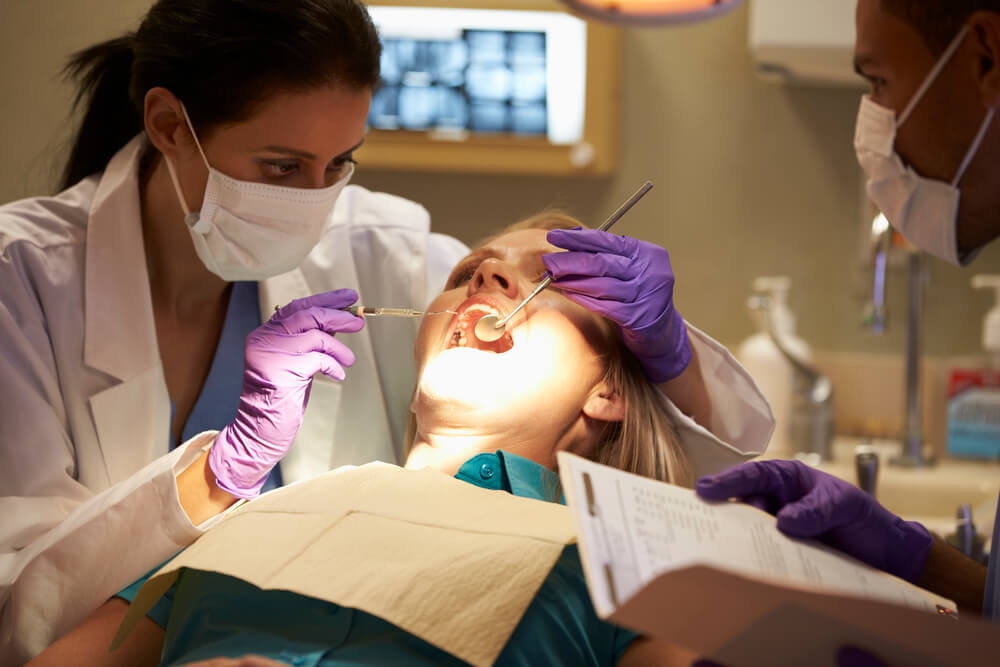
Lyme disease, also known as Lyme borreliosis, is caused by the tick-borne spirochete bacterium Borrelia burgdorfer.
Lyme disease is a multisystem inflammatory disease, and neurologic, articular, and cardiac manifestations may follow untreated early infection. While the B. burgdorferi bacterium does not make toxins or cause direct tissue damage, local inflammation results from host response mechanisms.
Three phases of general clinical manifestations
- Early localized: distinct, bull’s eye or target skin lesions in warm areas of the body (groin, axilla or belt line) that may itch, burn or hurt.
- Early disseminated: if treatment is not initiated involvement of brain or heart may occur.
- Late disease: also called as Post Treatment Lyme Disease Syndrome (PTLDS), this phase leads to muscle and bone involvement.
The link between Lyme disease and dental health
It has been observed that Lyme and many other chronic diseases are fed by the unique bacteria that develop in root canals and where teeth have been extracted. Lyme bacteria exists in the teeth, not in the enamel. The spirochete bacterium love to occupy in the dentin and some three miles of tiny tubules.
Its clinical manifestations may include facial and dental pain (tooth ache), facial nerve palsy, headache, temporomandibular (jaw) joint pain, and masticatory (chewing) muscle pain. The effects that can precipitate when performing dental procedures on a patient with Lyme disease must also be considered. 1
Symptoms of oral presentations
Symptoms associated with Lyme disease include headache and facial pain that often mimics dental pathology and temporomandibular (such as TMJ) disorders.
Other oral symptoms can be:
- Dry mouth
- Tooth sensitivity
- Pulpitis, or the oral inflammation of dental pulp
- Bell’s palsy, or partial facial paralysis
- Cranial nerve palsy may occur in early disseminated disease. Bell’s palsy is a form of usually temporary facial neuropathy resulting from inflammation/damage to the seventh cranial nerve (i.e., facial nerve)
- Involvement of the saliva producing glands may manifest as brief inflammation of the gland
Getting the right treatment
Because Lyme bacteria resides in the mouth, the disease can cause tooth pain unrelated to cavities or any other dental issues, which might indicate Lyme disease to your dentist. However, the misdiagnosis of any of these symptoms by a dental professional could result in unnecessary procedures, like root canals. Knowing the above oral symptoms can help a patient identify Lyme disease early.
Fortunately, oral symptoms will disappear after a successful treatment. That doesn’t mean you should drop your guard though. Another tick bite could mean another bout of Lyme disease. People who have been bitten by a tick or who live in tick infested regions should take these oral symptoms and other symptoms of Lyme disease seriously.
If a patient is worried about contracting Lyme disease, he/she should visit a medical care provider and dental hygienist to check the mouth for indications of Lyme.
References
- Lyme disease: considerations for dentistry. J Orofac Pain. 1996 Winter;10(1):74-86.
- Lyme disease awareness for the New Jersey dentist. A survey of orofacial and headache complaints associated with Lyme disease. J N J Dent Assoc. 1998 Winter;69(1):19, 21, 62-3 passim.
- Lyme disease: College of Dental Hygienists of Ontario.




Thank you for your article.
I have Lyme disease and have been experiencing tooth pain which may require a root canal or extraction (although there is little decay in this particular tooth).
I was interested in the fact that Borellia can thrive in an area where the tooth has been extracted, could you explain how this happens please and what steps to take to help keep the extracted tooth area clean from this bacteria? Thank you.
My husband and I were tested for Lyme disease 3 years ago and both tests came back positive. My symptoms were never as bad as my husband, but the doctor treated us with doxycycline for 13 months, about $3 each per month! He said that he, his wife and one daughter, also a doctor, has had Lyme. He believes a simple round of doxycycline for 13 months will totally wipe out Lyme! After 13 months on doxycycline we didn’t seem to be improving, we decided to quit the meds due to side effects. Our care provider Dr Miller introduced us to Health Herbs Clinic Lyme herbal treatment. The treatment is a miracle. We are both cured as well as his family. Many doctors don’t know that a few months of antibiotics simply will not kill Lyme, Going back to my farm work again gives me so much joy. I recommend healthherbsclinic Lyme herbal formula for anyone out there with same condition. visit their website healthherbsclinic .com.